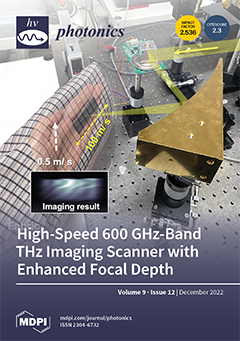A novel photodetector, based on Cu
2ZnSnS
4, CZTS, is deposited on Cu/CuFeO
2 for wavelength and light power intensity detection. The preparation of CuFeO
2 is carried out by the direct combustion of Cu foil wetted with Fe(NO
3)
2 solution. The preparation of CZTS is carried out using the hydrothermal method, then it is dropped on CuFeO
2 using the drop casting method at 70 °C. Various analyses are used to look at the chemical, morphological, and optical aspects of the Cu/CuFeO
2/CZTS, such as UV–vis, SEM, TEM, selected-area electron diffraction, and XRD, in which all characteristic peaks are confirmed for the prepared materials. The Cu/CuFeO
2/CZTS thin film’s SEM image has a homogeneous morphology, with particles that are around 350 nm in size, demonstrating a significant improvement in morphology over Cu/CuFeO
2/CZTS thin film. The TEM analysis verified the nanostructured morphology of Cu/CuFeO
2/CZTS. From XRD analysis of Cu/CuFeO
2/CZTS, the high intensity of the generated peaks indexed to hexagonal (2H) CuFeO
2 and kesterite CZTS crystal structures revealed a compact highly crystal material. From optical analysis, CZTS, Cu/CuFeO
2, and Cu/CuFeO
2/CZTS thin films recoded band gaps of 1.49, 1.75, and 1.23 eV, respectively. According to the band gap measurements, the optical absorption of the Cu/CuFeO
2/CZTS photodetector has clearly increased. The Cu/CuFeO
2/CZTS as photodetector has a detectivity (D) and responsivity (R) of 1.7 × 10
10 Jones and 127 mAW
−1, respectively. Moreover, the external quantum efficiency (EQE) is 41.5% at 25 mW·cm
−2 and 390 nm. Hence, the prepared Cu/CuFeO
2/CZTS photodetector has a very high photoelectrical response, making it very promising as a broadband photodetector.
Full article





